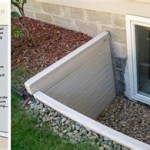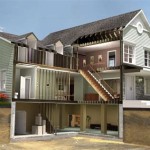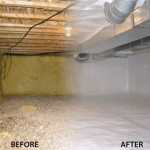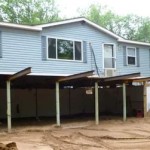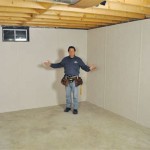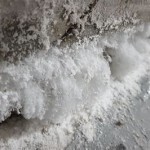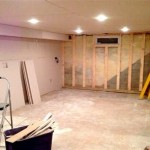Insulation Code for Basement Walls: A Guide to Essential Aspects
Insulating basement walls is a crucial aspect of home insulation, providing a multitude of benefits including energy efficiency, moisture control, and improved indoor air quality. Adhering to insulation codes ensures proper installation and performance, saving homeowners time, money, and unnecessary headaches.
Different building codes and standards govern insulation practices, providing guidelines for materials, methods, and R-values (the measure of thermal resistance) required for basement wall insulation. These codes aim to minimize heat loss, reduce condensation, and maintain comfortable temperatures within the basement space.
Choosing Insulation Materials
The International Residential Code (IRC) and the International Energy Conservation Code (IECC) specify approved materials for basement wall insulation. Common options include:
- Extruded polystyrene (XPS) foam board: Rigid and moisture-resistant, XPS foam provides high insulation values.
- Expanded polystyrene (EPS) foam board: Similar to XPS foam, EPS is a rigid and lightweight option.
- Spray foam: Applied as a liquid that expands into foam, spray foam conforms to irregular surfaces and provides excellent air sealing.
- Mineral wool batts: Made from natural or recycled fibers, mineral wool batts are fire-resistant and have good sound absorption properties.
R-Value Requirements
Building codes specify minimum R-values for basement wall insulation based on climate zones. In colder regions, higher R-values are required to minimize heat loss. Refer to the applicable code for specific R-value requirements in your area.
Installation Techniques
Proper installation is essential for optimal insulation performance. Codes outline specific guidelines for attaching insulation to basement walls, ensuring a tight seal and preventing air infiltration. Common methods include:
- Adhesive: Adhesive is applied to the basement wall, and insulation boards are pressed into place.
- Mechanical fasteners: Insulation boards are secured with mechanical fasteners, such as nails or screws.
- Impaling: For certain types of insulation, impaling pins are driven through the insulation and into the wall to hold it in place.
Air Sealing
Air sealing is vital to prevent heat loss and moisture infiltration. Codes require gaps, cracks, and penetrations around insulation to be sealed. This can be achieved with caulk, spray foam, or weatherstripping.
Moisture Control
Basement walls are prone to moisture penetration, which can compromise insulation performance. Codes address moisture control through the installation of vapor barriers, drainage systems, and waterproofing measures.
Inspections
Building codes often require inspections to ensure proper insulation installation and compliance with code requirements. Inspections typically occur during construction and may be repeated periodically to monitor the insulation's condition.
Conclusion
Adhering to insulation code for basement walls is essential for a well-insulated home. By selecting approved materials, meeting R-value requirements, employing proper installation techniques, and addressing air sealing and moisture control, homeowners can reap the benefits of energy efficiency, comfort, and long-term durability.
Consulting with a qualified contractor can provide valuable guidance and ensure code compliance, leading to a successful and energy-efficient basement insulation project.

Etw Foundation Code Minimum R 10 Continuous Insulation Buildingscience Com

Retrofitting Basement Insulation Fine Homebuilding

Healthy Basement Insulation Systems Quality Built Basements Llc

Doe Building Foundations Section 2 1 Insulation

How To Insulate Basement Walls True Value

Basement Blanket Insulation Building America Solution Center

Doe Building Foundations Section 2

Doe Building Foundations Section 2 Concrete Wall Interior Insulation

Envelope Pa Energy Code

How To Insulate Your Basement S Concrete Walls The Seattle Times
Related Posts
